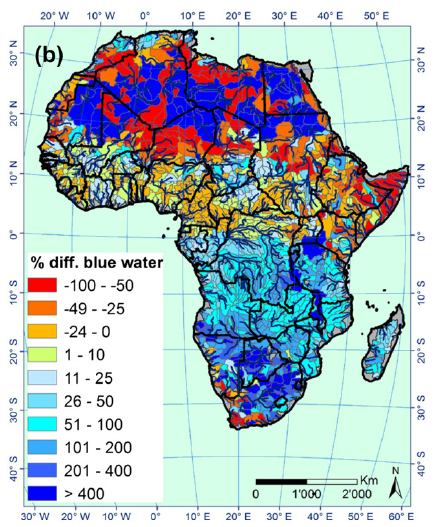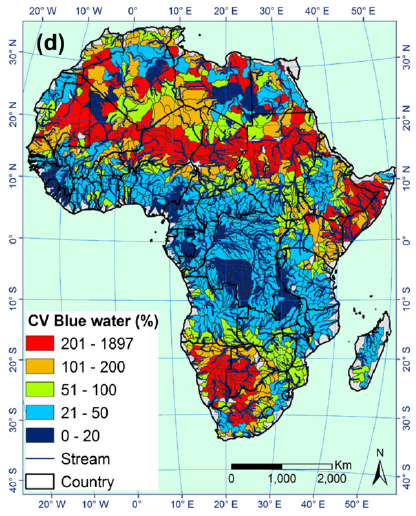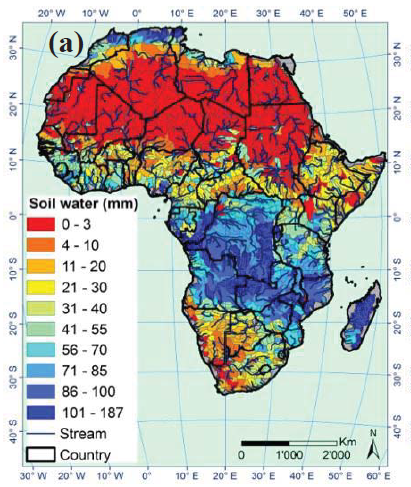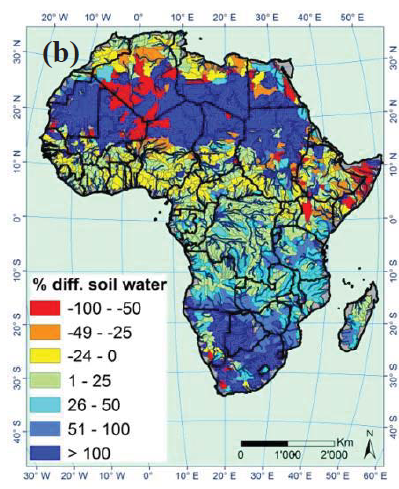Climate Change in Africa
Climate change impacts on water resources of Africa

This
project analyzes the impact of climate change on freshwater availability in
Africa at the subbasin level for 2020–2040. Droughts can have devastating
effects on water supply, crop production, food security, and many other aspects
of human livelihood. The impact is particularly severe in Africa, where
subsistence farming dominates food production and political, social, and
economic systems are often inadequately prepared to cope with disasters
Water resources in Africa
In this project we analyzed the impact of climate change on freshwater availability in Africa at the subbasin level for the period of 2020–2040. Future climate projections from five global circulation models (GCMs) under the four IPCC emission scenarios were fed into an existing SWAT hydrological model to project the impact on different components of water resources across the African continent. The GCMs have been downscaled based on observed data of Climate Research Unit to represent local climate conditions at 0.5-grid spatial resolution. The results showed that for Africa as a whole, the mean total quantity of water resources is likely to increase. For individual subbasins and countries, variations are, however, substantial. Although uncertainties are high in the simulated results, we found that in many regions/countries, most of the climate scenarios projected the same direction of changes in water resources, suggesting relatively high confidence in the projections. The assessment of the number of dry days and the frequency of their occurrences suggests an increase in the drought events and their duration in the future. Overall, the dry regions have higher uncertainties than the wet regions in the projected impacts on water resources. This poses an additional challenge to the agriculture in dry regions where water shortage is already severe while irrigation is expected to become more important to stabilize and increase food production.

More information is provided in the related paper using the following link: Africa Climate Change Paper

We assessed the spatial and temporal distributions of water resources. The presented model is then used to project the water resources availability under the future climate change in Africa for 2020-2040. Particular attention is given to the dry periods and their implications for water supply and food production. The simulation under the current climate shows that Africa has abundant water resources on a continental and annual basis, but the problem is the enormous spatial and temporal variability within and between African countries and river basins. The simulation of the impact of future climate change on water resources is conducted with the projected climate data from 5 global circulation models (GCMs) under the four IPCC emission scenarios. The projected climate data are fed into the SWAT model calibrated under the current climate situation. The results show that the mean total quantity of water resources is likely to increase for Africa as a whole. For individual subbasins and countries, variations are substantial. Although uncertainties are high in the simulated results, it is found that in many regions/countries, most of the climate scenarios projected the same direction of changes in water resources, suggesting relatively high confidence in the projections. The assessment of the number of dry days and the frequency of their occurrences suggests an increase in the drought events and their duration in the future. This poses an additional challenge to agriculture in dry regions where water shortage is already severe, while irrigation is expected to become more important to stabilize and increase food production.


Long-term average soil water (1975-1995)

Changes in soil water (2020–2039 vs 1975-1995)
